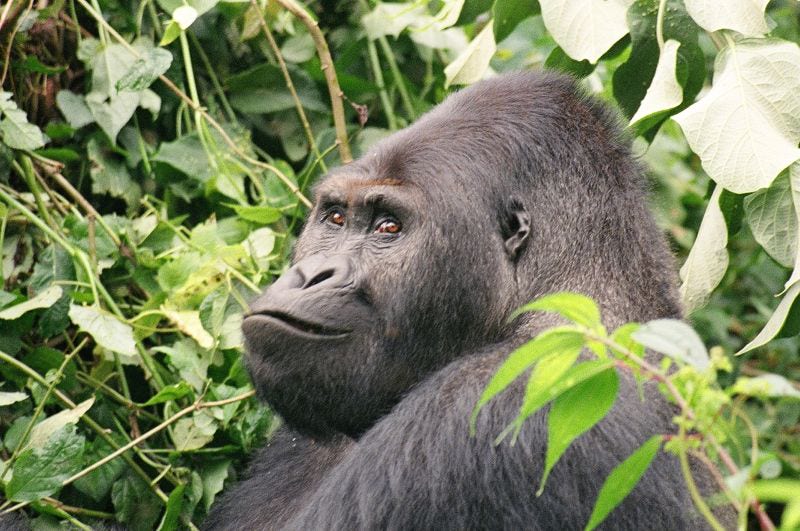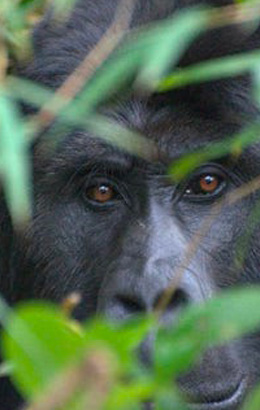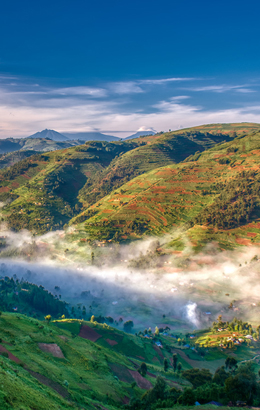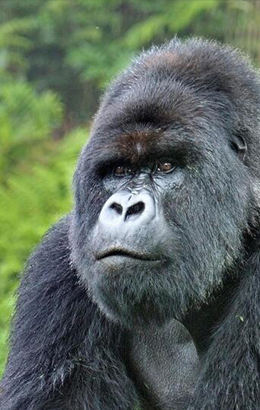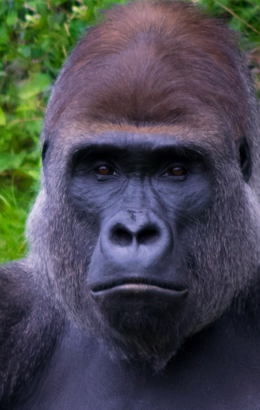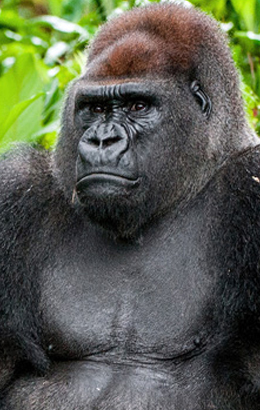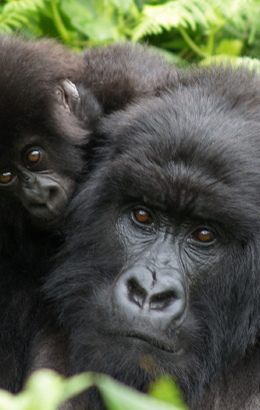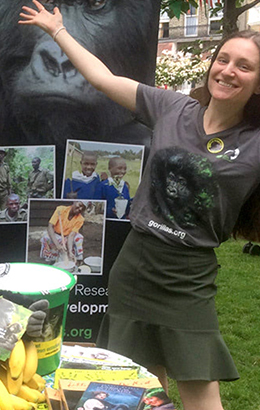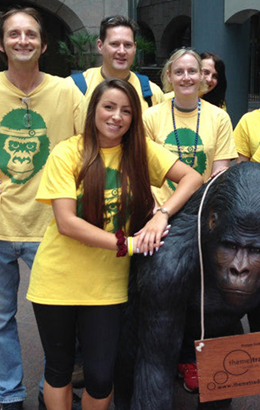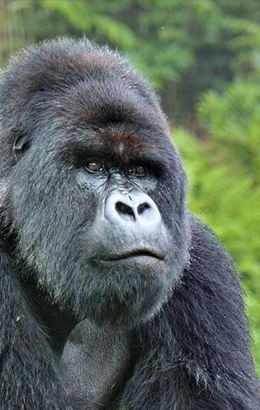5 reasons why we can’t let eastern lowland gorillas vanish forever
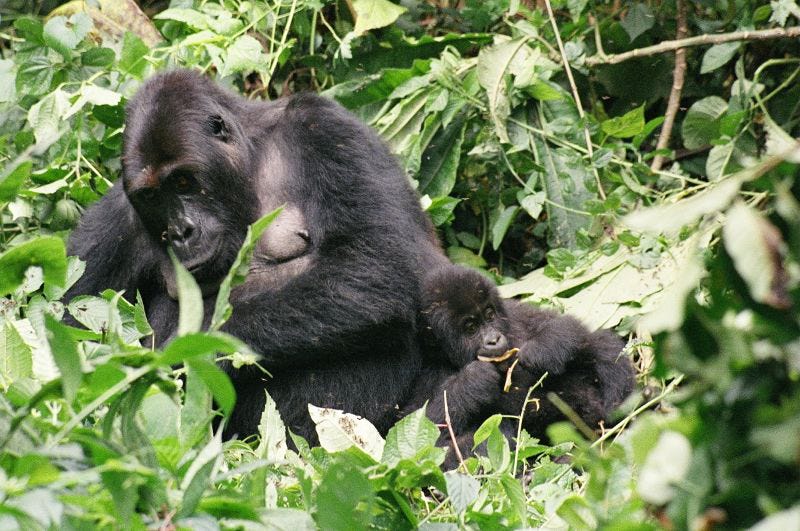
Hi, this is Karolina,
If you’ve been following our Blog from the field, you will have read my colleague Tuver’s reaction to the news that the eastern lowland gorilla (otherwise known as the Grauer’s gorilla) has now gone from being classed as ‘endangered’ to being declared ‘critically-endangered’. He gave us five key reasons why, despite our best efforts, this sub-species of gorilla is being pushed closer and closer to extinction.
I’ve been lucky enough to see eastern lowland gorillas in the wild. Just a moment in their presence is enough to convince you that we need to do all we can to keep them safe. And if you really do need more convincing, here, to follow up from Tuver’s great blog post, are five of my own reasons why it’s more important than ever to keep the Grauer’s gorilla safe for generations to come:
1. Gorillas are one of our closest and largest living relatives: We share over 98% of DNA with these gentle giants. These magnificent animals are the worlds’ largest primates. A silverback eastern lowland gorilla (Gorilla beringei graueri) can reach up to 250kg (39st 5lb) in weight, from a diet that is almost exclusively vegetarian.
2. Like us, they like their home comforts: Even gorillas have a bedtime routine. After a long day of travelling, foraging and eating, a gorilla will skillfully create its nest from branches and leaves. Fun fact: Unlike chimpanzees that also build nests, gorillas do not return to their beds, so a new nest will be created every night.
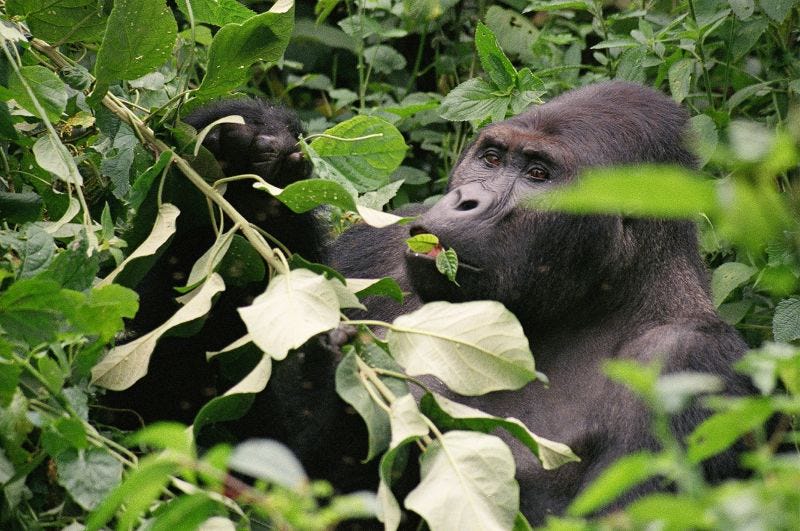
3. They’re guardians of the forest: Living in the war-torn DR Congo means that illegal poaching is significantly more likely in their habitat. The Gorilla Organization staff that work closely with Grauer’s gorillas in the Walikale Community and Gorilla Conservation Reserve report that gorillas help protect other animals by dismantling simple traps that they find on the forest floor during their foraging and travelling activities. This intelligent behaviour helps prevent young gorillas being caught in the snares and also helps prevent lethal injury to duikers, bush pigs and other animals.
4. Gorillas are important to indigenous communities: Many local indigenous tribes and communities living alongside the gorilla habitat consider the gorillas to be their patron gods. The Kisimba clan (Bahumba) believe they descended from the gorillas. Their traditional tale tells a story of a gorilla rescuing a man that was lost and stuck high up in a tree. To save the man, a gorilla climbed up the tree and gently placed him on his silver back before carrying him back to safety.
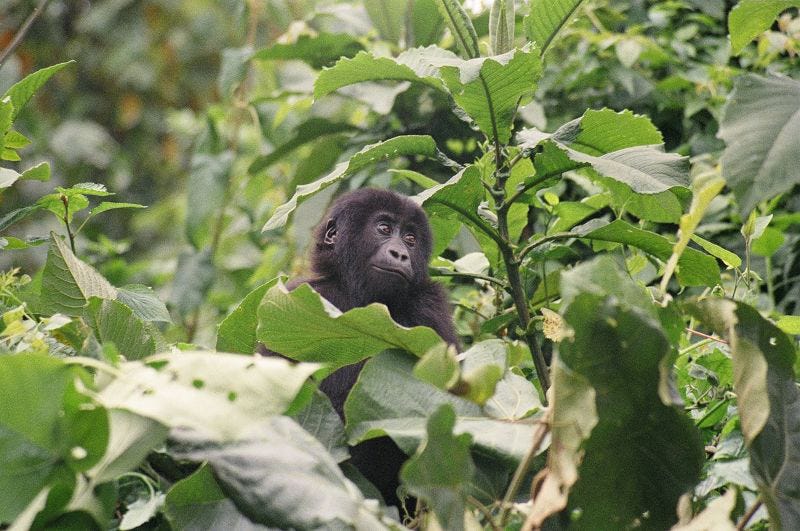
5. Gorillas are critically endangered: The forest will never be same if the gorillas are gone. The Grauer’s gorilla population has declined by more than 77% in just one generation (approximately 13 years). This means they are now classified as “critically endangered” by IUCN (Appendix 1; red list of endangered species). The drastic population decline is attributed to habitat loss, poaching and illegal wildlife trade. Illegal coltan mines (minerals used in smart phone and computer production) are controlled by militia in the gorilla habitat (DRC) and contribute to habitat destruction and poaching.
As always, your help is crucial if we are to step up our efforts to save this, and all sub-species of gorilla, from extinction, so than you for your continued support!
